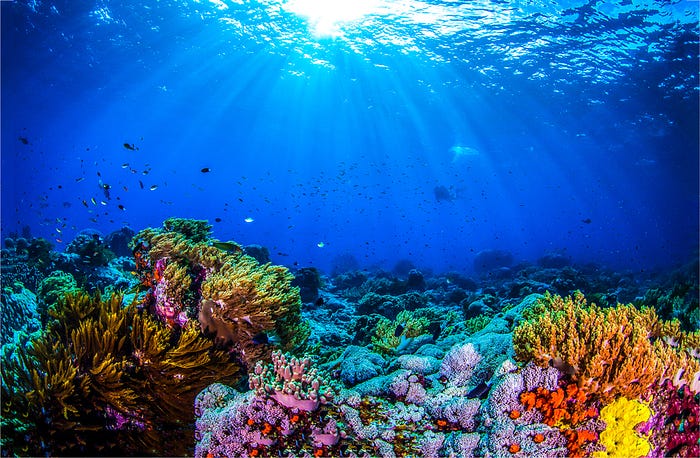Impact of Global Warming on Marine Biodiversity: A Deep Dive
Written on
Understanding Ocean Biodiversity
Ocean biodiversity encompasses the variety of life forms residing within marine ecosystems. Currently, our planet is grappling with three interlinked crises: climate change, pollution, and the decline of biodiversity. While often viewed separately, these issues exacerbate each other. A striking example is how biodiversity loss can intensify climate change. My previous article illustrated this relationship, highlighting the crucial role of whales in mitigating climate change.
However, the reverse is also true; climate change poses a significant threat to biodiversity. This interplay is critical, as biodiversity is vital for maintaining healthy ecosystems. An ecosystem is a community of organisms interacting with their physical surroundings, with oceans being one of the most crucial environments. As the core of our planet's hydrosphere, any changes in marine biodiversity can have far-reaching consequences, including disruptions to food chains and a subsequent decline in available resources.
The Interconnectedness of Climate and Biodiversity
As climate change and biodiversity loss affect one another, this can lead to a downward spiral, resulting in extensive repercussions. Here’s how climate change influences ocean biodiversity:
Ocean Warming
One significant impact of climate change on marine biodiversity is through rising ocean temperatures. A recent graph illustrates the alarming increase in sea surface temperatures over the years, compared to the average temperatures recorded from 1971 to 2000. This increase is primarily due to greenhouse gases, which trap heat in the atmosphere; in fact, 90% of this heat is absorbed by our oceans.
This rise in temperature affects marine life both individually and at a population level. For instance, warmer waters can disrupt digestion and immune functions in marine species, lead to respiratory issues, and even contribute to coral bleaching.

Acidification
Another consequence of climate change is ocean acidification. This phenomenon occurs as oceans absorb excess CO2 from the atmosphere, resulting in a higher concentration of hydrogen ions and a decrease in pH levels. Since the industrial revolution, ocean acidity has risen by approximately 30%.
This shift in acidity impacts marine organisms on both individual and population scales. For example, reproduction and growth rates are adversely affected, leading to potential declines in certain species.
Video: Marine climate change - Can our sealife survive?
Deoxygenation
Lastly, climate change leads to deoxygenation in oceans, meaning that warmer waters can hold less oxygen. This affects the survival of marine embryos and alters predator-prey dynamics within ecosystems.
Video: How does Global Warming affect Oceans?
Conclusion: Taking Action
The impacts of climate change on ocean biodiversity are profound, affecting temperature, acidity, and oxygen levels. It is crucial to take action to mitigate these effects. Here are a few practical steps individuals can take:
- Advocate for governmental policies that prioritize climate and ocean conservation.
- Support organizations dedicated to protecting marine environments.
- Reduce energy consumption to lower your carbon footprint.
- Opt for sustainable travel methods and dietary choices.
What steps can you implement in your own life? Do you have additional ideas to share? Your contributions can inspire collective action.
Credit
This article draws on the work of Talukder, B., Ganguli, N., Matthew, R., vanLoon, G. W., Hipel, K. W., & Orbinski, J. (2022). "Climate change-accelerated ocean biodiversity loss & associated planetary health impacts." The Journal of Climate Change and Health, 100114.